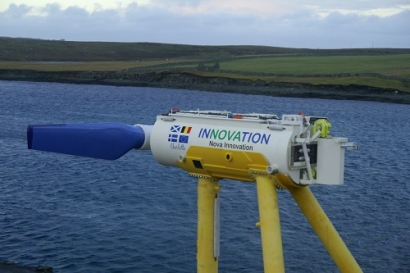
Since the start of October, the grid has been supplied by Nova’s Tidal Energy Storage System (TESS) demonstrator, which integrates Nova Innovation’s Shetland Tidal Array with Tesla ’s battery technology to provide clean power ‘on demand’.
Simon Forrest, CEO at Nova Innovation, said, “By storing the clean energy generated by the natural ebb and flow of the tide, we can control the supply of electricity to the grid to match demand. This creates a consistent source of completely predictable power from a clean, sustainable resource.”
The project has secured funding from the Scottish Government’s Low Carbon Infrastructure Transition Programme. The programme, supported by the European Regional Development Fund, is accelerating the development and delivery of low-carbon infrastructure projects across Scotland.
Scotland’s Energy Minister, Paul Wheelhouse, visited Nova Innovations’ Edinburgh-based workshop to see where the turbines were designed and manufactured. The Minister viewed live footage of the turbines generating energy from a natural, renewable source.
Wheelhouse commented, “Nova Innovation is a dynamic Scottish company with exciting technology and, of course, they can and should be rightly proud of having developed the World’s first tidal array at Bluemull Sound, Shetland.
“Now, with the support of £272,600 ($347,744) of Scottish Government funding, this already successful project will also allow for the deployment of additional tidal devices, expanding the generating capacity of the Nova Innovation Shetland Tidal Array.”
The project also has the support of leading environmental charities because of its impact on reducing carbon-intensive energy production.
Sam Gardner, Acting Director of WWF Scotland, said, “Predictable renewable power and smart storage working in harmony is the holy grail of the transition to a renewable electricity system.
“It’s great that the Scottish Government has backed this project and we hope it inspires politicians and others with the confidence to provide further support for ground-breaking technologies to cut climate pollution.”

